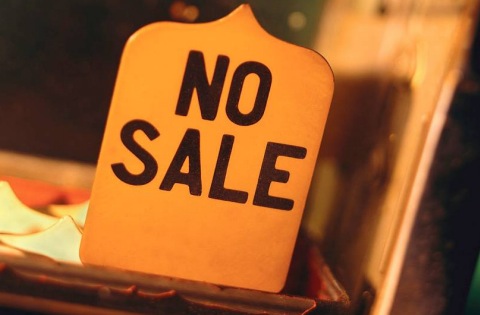What makes some content marketing irresistible, while the bulk of stuff you see every day is easily forgotten? Have you ever stopped to analyse what you choose to read, comment on and share versus what you choose to ignore?
Here’s a good example – the “hot mugshot guy” used in this post should be very familiar to you. Why? Because Jeremy Meeks shot to fame two weeks ago when the Stockton police department posted a photo of him on Facebook after arresting him on a serious weapons charge.
The image quickly went viral with hundreds of thousands of likes, comments and shares and the story was picked up by every major newspaper, radio and cable TV program across North America (and in many other countries). He now has two major modelling agencies chasing him to sign a contract.
Now Jeremy’s mugshot is not particularly fascinating, earth shattering, important or even relevant to the lives of most of us, yet somehow, this simple Facebook post unwittingly outperformed almost every other news story on the day it broke. It had the “je ne sais quoi” that is required for content marketing to go viral on a global scale.
And if you think about it, there are lessons that we can take from this story (and other successful posts like it) to boost the persuasive power of our own content marketing so that it inspires and ignites both passion and action among our readers and customers.
Contagious: What Makes Things Catch On?
What was it about the last piece that you read or saw – whether it be an article, photo, advertisement, content marketing or video – that took it from mildly interesting and elevated it to the realm of positively sharable?
As you no doubt suspect, content marketing that has the potential to go viral can be a huge asset to you for two reasons – it feels great to make it and it can bring lots of attention to what you’re doing to solve real problems for your customers. Unfortunately, if no one sees your content marketing, it’s not really that useful to anyone.
Content may be King, but you will be the Lord of a very small domain if you are still reaching only one hundred people next week with your valuable message. Here are my Top 5 Tips to magnify the chance of your message reaching hundreds of thousands based on neuroscience, behavioral science and the success of the most popular posts on Linkedin.
- Lists Work
Ironically, I read a post last week where the author lamented the overuse of articles titled “The Top 5 Tips”, “21 Secrets To” etc. He postulated “why do so many authors write posts with lists”? A quick bit of research on my part revealed that the Top three articles in the past few months on Linked in (in terms of readers, shares and comments) were all list based posts:
- 10 Simple Concepts to Become a Better Leader, Dave Kerpen .
- 6 Toxic Behaviours That Push People Away: How To Recognize Them in Yourself and Change Them, Kathy Caprino
- The #1 Career Mistake Capable People Make, Greg McKeown
In fact, nine of the top ten were list based articles. But could this just be a coincidence?
In-depth research by Buzzsumo supports this phenomenon. Buzzsumo analysed over one hundred million articles online and concluded that lists and infographics were more likely to be shared virally than any other content. Love them or hate them, lists outperform how to articles, videos, explanatory posts and other content marketing in terms of shares and comments. Done correctly, a good list post will provide hands-on, practical tips that you can put into practice today.
One of the vital elements that is believed to cause a list to spread, is its level of “practical utility,” as described by a recent study By Berger and Milkman (University of Pennsylvania – Wharton School of Business. The ability to use and apply the information contained in a post is a key element that drives content to spread virally. In effect, the list creates a memory inducing trigger.
Essentially, we tend to share what we’re thinking about—and we only think about the things we can actually remember. Lists make it easy for our brains to grasp, remember and file away valuable information for safe keeping and retrieval. They convey the content you are about to read contains a nice packet of useful, easy-to-digest information that you can share with others to add value and create dialogue.
- A Good Picture is Still Worth a Thousand Words (and Ten Thousand Shares)
Neuroscience has proven that your brain is a highly visual beast. Somewhere between 80% and 90% of brain activity is associated with making sense of visual stimuli, and the brain processes these visual stimuli much more quickly—about 40 times more quickly—than it does auditory stimuli.
This makes perfect sense when you think about the role that visual cues played in the survival of our ancient ancestors—particularly the way in which the old brain reacted quickly to keep our cavemen ancestors out of the jaws of tigers and mammoths. The old brain is extraordinarily fast at processing these visual cues, “seeing” them in only 2–3 milliseconds and reacting to them almost instantaneously.
In sharp contrast, it takes your new brain (or neocortex) a relatively snail-paced 500 milliseconds to process the exact same visual data. Since humans cannot rely on the slow processing speed of the new brain, you are hardwired to make decisions and take action at the old brain level that are mostly based on visual input and instinctual responses. Your neocortex kicks in much later in the process to help you find data, proof, and justification for the gut decision you have already made.
This of course makes visual imagery one of the most powerful triggers you can harness and use to your advantage when creating content. As they say, a picture really is worth a thousand words. However, not all pictures are created equal. The visuals you use in your content must mean something to the old brain of your prospect—they must have a “what’s in it for me” (WIIFM) message and they must stimulate a strong emotional response. A well crafted story or a sharp picture that captures the essence of your reader’s most pressing source of pain, holds the power to trigger a wave of comments and shares.
And as you might expect, the Top 3 posts on Linkedin all used strong graphics to convey a quick emotional response and draw readers in. The most successful, the article by Dave Kerpen also cleverly utilized a shareable infographic as the primary photo. It’s a visual snapshot and roadmap for the 11 concepts he outlines on leadership. It is no surprise that his article received over 126,000 shares on Linkedin alone and a whopping 7400+ comments.
- Not All Shares Are Created Equal
Not all shares will have the same impact on the ultimate reach of your content marketing. Studies show that getting just one person who has influence online to share your article can have a multiplier effect on your content. It pays dividends to pay attention to the influencers that are currently sharing content that closely matches or parallels your own. By building relationships with them and inviting them to engage, you can exponentially increase your chance of reaching 4x more shares, than by relying solely on your own network.
After analysing over one hundred million articles, Buzzsumo compared the number of social shares for articles that had zero influencers versus those that had at least one influencer (where an influencer is defined as someone who receives at least 200 re-tweets on average, for every 100 tweets posted). What they found was that just having just one influencer share your content will boost your reach and shares by 31.8%. Having three influencers doubles the number and having 5 would almost quadruple the number of social shares you receive.
Interestingly, some recent research in the area of neuroscience seems to back up the notion that some people are far more effective at spreading ideas, stories and content. In “Creating Buzz: The Neural Correlates of Effective Message Propagation”, Falk, Morelli, Welborn, Daumbacher and Lieberman mapped the brain centers associated with ideas that are likely to be contagious. They were hoping to create maps which could be used in the future to forecast which ideas should be successful and who is likely to be effective at spreading them.
The scientists found that increased activity in the Temporoparietal Junction (TPJ) and dorsomedial prefrontal cortex (“the mentalizing network”) of the subjects, was associated with an increased ability to convince others to get on board with their favorite ideas. What this research is suggesting is that some people may have a pre-disposition to be able to share ideas on a global scale.
As this research evolves, we will get closer and closer to discovering what differentiates ideas that bomb from ideas that buzz. Like all ideas, stories, content marketing etc, these concepts cannot spread virally on their own – they rely on effective social communication for dissemination. Messages which produce greater “mentalizing activity” in the brain when viewed are more likely to be passed on and the subjects appear to be more motivated to pass them on. The social currency of being a person who is known for spreading information of value (i.e. an information broker or ideas salesman) is incredibly valuable. Various networking sites such as Linkedin, Facebook and Twitter have long recognized this phenomenon and put formal strategies in place to promote these individuals as “information brokers or experts” and increase the overall engagement of readers with news and posts on their sites.
Case in point, the most successful article on Linkedin by Dave Kerpen was shared and commented by 5 highly influential readers. Those 5 alone were directly responsible for 511 likes and comments plus hundreds of LinkedIn shares, tweets and Facebook likes. As a result, over time Dave Kerpen has built up a following of over 458,000 people on Linkedin by writing great, shareable posts.
Similarly, Greg MeKeown’s post had 6 or 7 influencers who contributed to the large number of likes, comments and shares (particularly within Linkedin).
- Clickbait Sucks
For any entrepreneur, manager or blogger, headlines are vital to an even more important end — drawing a substantial amount of attention to topics that really matter. But designing memorable, curiosity-inducing headlines isn’t enough. As you know, content, articles and posts don’t go viral because people click — they go viral because people share.
“Clickbait” — overselling content marketing with outrageous headlines that entice the maximum number of people to click and visit a website — works to generate some views but it will never be enough to create viral content. Formulaic headlines don’t guarantee content that has the potential to go viral. To comment or share, your readers have to love what they see when they hit your site, see your video or read your post. That is why the two most crucial factors in motivating readers to share your content are the quality of and the emotion that you create with the insights you provide.
Ask yourself these three questions – “Does the content that I am about to post:”
- Engage or entertain on a relevant topic?
- Draw the audience in and invite them to imagine their world from a new perspective or inspire them to share their opinion?
- Deliver on the promise of the headline?
Headlines definitely matter but your content will only go viral if readers love what you are saying so much they are inspired to comment and share it with everyone. As you would suspect, all of the most read and shared articles on Linkedin delivered on the promise that the author’s made in their headlines – substantive posts, quality insights and practical tips that readers appreciated and felt compelled to share.
- We Share What Makes Us Feel Good
Emotion and repetition are the adhesives that cement events to your memory. As leading American neuroscientist Antonio Damasio puts it: “We are not thinking machines that feel, we are feeling machines that think.” Emotions play a part in virtually every decision you make, whether you like it or not, and sharing content is no exception. When something has an emotional impact on you, you are far more likely to remember and react; in that way, your strongest emotional responses will stay with you for your entire life because they create a deeper engram (or impression) in your mind.
Your emotions produce strong electrochemical responses that have been proven to directly influence the way you handle, respond to, and hold onto information. The cocktail of hormones that flood your mind when you experience strong emotions causes the connections in your brain to speed up, intensify, and be reinforced.
A strong emotional trigger is much more likely to drive you to share content or buy a product, than a rational argument for doing so. Emotional connections occur because your feelings are stirred. This happens whenever content you see causes you to “put yourself into the situation”. So content becomes great or memorable when it hooks you in—it effectively makes you a part of the scene and you feel the feelings of the story that is unfolding about something that is relevant to you.
As a sharing stimulus, emotion is incredibly powerful. And there is no more effective way to tap into or unleash the emotions of your readers than to tell them a story. Through the ages, we have passed on our history and our wisdom to our children in the form of stories. As a child, you likely came to expect a story from the people that you loved and looked up to—your parents, grandparents, siblings, teachers, ministers, and babysitters. Your brain felt comfortable and safe with both the stories and the storytellers and you are likely to pass on these stories, to your friends and your own children.
But the spectrum of emotions is large and research suggests that 3 particular emotions are more likely to result in content going viral. While anger, surprise and sadness motivated some people to share, awe, laughter and amusement universally outperformed all other emotions in inspiring social shares. For the most part, people want to be uplifted by posts and we also want to think that sharing interesting, practical and fun content brings value to our relationships, creates social currency, spurs conversation and inspires reaction.
This premise is supported by the Berger and Milkman study (University of Pennsylvania – Wharton School of Business), which examined the sharing of articles from the New York Times in 2008. They looked at approximately seven thousand articles to determine what characteristics the most-emailed articles had in common. After controlling for many other factors including author popularity, placement, timing etc., they discovered two features which stood out as being important to success – the positivity of the message and how much it excited the readers.
Not surprisingly all 3 of the top authors on Linkedin that I mentioned earlier utilized the element of storytelling to make their point. Their articles were positive, uplifting, fun and entertaining. Reading each one leaves you with the distinct impression that you can easily work these tips into your own work environment and that sharing these insights with your colleagues would be a great way to build camaraderie and create some thought provoking and constructive dialogue.
Summary
Even Aristotle (in 350 B.C) was obsessed with the pursuit of the secret to make his content persuasive and memorable – so that his ideas would be passed on from person to person. Replace oratory with online content creator, and Aristotle’s pursuit of the illusive key to what makes ideas catch on and spread, seems incredibly contemporary. Although with our modern day ability to track and analyse brain activity and data from millions of articles and websites at a time, we are much closer now to clearly defining the variables that cause us to engage deeply with and share content virally.
Everyone knows there is a huge gap between what customers do and what they say they will do. This is the single, most important reason why focus groups are inherently unreliable in predicting the commercial success of an ad, idea or product. And British Airways knows this better than most as this one simple mistake – of believing what customers said they might do – meant they had to throw away thousands of dollars worth of fresh produce.
Several years ago, someone in the marketing department at British Airways had a crazy idea. He thought it might be a great idea to introduce a private, fully stocked mini-bar in the first class cabin. British Airways of course conducted lots of focus groups to find out what their customers would most likely want when they woke up in the middle of the night craving a snack. The research was pretty clear – fresh fruit and healthy snacks like salads were the most sought after.
The cabin crew were sceptical when they heard about the health conscious proposal and one experienced stewardess was very vocal in her critique. So much so, that British Airways agreed to her suggestion that they also add a selection of chocolates and cakes to the mini-fridge. Perhaps not surprisingly, when the first planes to stock the self-serve mini-bars touched down and were checked and re-stocked by the ground crews, an interesting truth came to light. Without fail, the cakes and chocolates had been devoured but all of the salads and fruit were left untouched.
Do you know why?
The answer lies in the way that our brains are hard-wired.
Neuroscience has proven that there are many distinct parts of the brain and each of them performs a different function. However, only 1 of them is responsible for decision making and it fires up long before you are consciously aware that you have made a decision.
The biggest part of brain – the neo cortex – is where you think and reason. So when your customer says “I need to think about it” or “is this the best price I can get?” this part of the brain is firing up and looking for data. Not surprisingly, this part of the brain reacts slowly and uses up tons of your body’s energy – in order to keep you safe and alive, the body is hard wired not to rely on the thinking part of the brain to assess and evaluate all the data and information.
At the top of your spinal cord, there is a collection of neurons – which are commonly referred to as the old or reptilian brain. It is your fight or flight brain – and its sole responsibility is to ensure your survival. It’s the part of the brain that lights up when you DECIDE.
It lights up even before you have conscious awareness that you have made a decision. Now, while it is very true that this is the most primitive part of your brain, the good news is that it is very predictable. By understanding how this part of your brain works, you will discover why you should never offer your customers fruit when what they really crave is chocolate.
The old or reptilian brain of your customers is an automatic mechanism – it does not think, it only DECIDES and ACTS. It is always at work scanning the environment looking for information of value to his survival.
So how does this apply to your customers and your product/service?
Just for a moment, I want you to imagine that you are in the business of selling pizza. Now, it doesn’t matter whether you are Pizza Hut, Dominos, Eagleboys, or Pizza World… you’re basically selling a commodity and the market looks fairly price conscious, doesn’t it? The reason for that is simple – the consumer finds it hard to distinguish between your pizza and the next guy’s.
In your mind, you might think yours is better because your crust is thicker and you provide more toppings and value. But in the eyes of the consumer, your pizza isn’t really worth much more than your competitor’s. Why is that?
Even though you think there is a difference, in the eyes of your customer, there isn’t. 95% of what you and the next guy offer are essentially the exact same thing. And as long as you keep operating in that zone with a marketing message that doesn’t stand out and stake a claim, you will continue to compete on price because your message forces your customer to think too hard and evaluate all the options.
So knowing this, what could you do differently?
In 1973, one company identified a way to stand out and grab market share in this highly competitive market. It didn’t claim to have the best, the thickest crust or even the cheapest pizza, it just made you a promise that if you ordered from them, you would get it in 30 minutes or your pizza was free. It was the most successful campaign in the history of the industry – for good reason.
Think about it, when you order a pizza, what is the #1 burning question that you have in the back of your mind? —– “I wonder when the pizza will get here?”
Dominos answered that question for you. They didn’t offer fruit when all you really wanted was chocolate. Their offer, which was different from everyone else’s, solved your #1 source of pain, didn’t make you think too hard and it triggered the part of your brain that decides and dials.
This is the power of Sales Seduction – understanding why your customer says YES and helping him to say YES to your product/service. When you discover “what the chocolate is for your specific customers and prospects”, you will accelerate your sales process, close more business, trigger decisions and be able to charge a premium price for your product/service.
Spend some time today to identify how you might be offering fruit instead of chocolate and therefore, boring or overwhelming your prospects. The key to offering what they really want, is in identifying the # 1 source of pain and proving that your solution will cure it today!
01 Nov 2013
3 Signs You Are About To Lose The Sale
 Like most of you, I get cold calls and e-mails every day. 98% of it is spam – offers for things I have no interest in, or don’t need. Only 2% are even relevant to me or my business and unfortunately, most of those don’t get my attention either (so they inadvertently lose the sale).
Like most of you, I get cold calls and e-mails every day. 98% of it is spam – offers for things I have no interest in, or don’t need. Only 2% are even relevant to me or my business and unfortunately, most of those don’t get my attention either (so they inadvertently lose the sale).
Truth be told, I almost never answer or respond and I’m sure you feel the exact same way. It’s not because I have it in for salespeople – although most of us will admit we cringe at the hard sell tactics of the stereotypical salesperson. It’s because the vast majority of salespeople completely blow their initial approach and fail to capture my interest.
Now I appreciate and respect the fact that these people are just trying to do their jobs and make a living. Selling is not a crime. In fact, we are ALL in the business of selling something – a product, a service, an idea, a lifestyle, a belief, or a cause. So, like you, I’m not insensitive to the plight of the honest, hardworking sales professional.
The problem is this – most of their hard work (and yours) often goes to waste when they lose the sale for reasons that are preventable. They end up turning me off their product or whatever it is they’re selling because I am either bored, confused or overwhelmed by the pitch. And this usually shows up in one of three classic responses that I give, which I’m sure you have heard (or given) before. These are telltale cues that they (or you) are about to lose the sale:
- This isn’t a good time for me,
- I need to think about it, or
- Leave it with me and I will go over it later.
Fortunately, the mistakes that produced these 3 classic responses are completely avoidable – mistakes that you don’t have to make (and lose the sale) once you discover how the brain of your prospect hears your message and what you need to do to help him make a decision quickly.
The first and most important step in creating a sales or marketing message that closes more business is to become an expert at capturing attention up-front. If you are successful at quickly and strongly enchanting your prospect within the first 60 seconds, you stand a much greater chance of holding his interest until you can communicate your entire message.
Regardless of the length of your sales presentation or marketing message, you must capture attention and deliver your most powerful points up-front when your audience is most alert and receptive. Never begin by introducing your brand, building your credibility, talking about your competitors, or listing features and benefits. This strategy will put your customers to sleep (cause you to lose the sale) and you risk having to deliver your most important claims and proof when your customers are least likely to remember them.
In order to capture the attention of your audience and hold it, you have to know the one thing that is MOST important to them right now. This is something that you cannot afford to guess or assume. In order to make the greatest impact and charm the old brain of your customer, you need to do your homework up-front. You can’t afford the luxury of pitching five or six features/benefits and hope that one of them will appeal or hit the mark.
By taking the time upfront to help your prospect understand, acknowledge, and quantify his #1 source of pain, he will become clear about the true source and intensity of this problem, and you will reinforce (with his old brain) that it is safe to trust you and your proposed solution. Failing to do so, will inevitably lead to the undesired result of causing you to lose the sale and waste your valuable time and money in the process.
 If there’s one difficult experience that every sales or marketing professional has been through at least once, it’s that sinking sensation that comes when a campaign you really poured your heart and soul into just doesn’t hit the mark, for reasons you don’t completely understand. Naturally, you wonder if it was something obvious that you missed – like a spelling error or a grammatical snafu? Maybe you didn’t include enough information? Or your call to action just wasn’t compelling enough?
If there’s one difficult experience that every sales or marketing professional has been through at least once, it’s that sinking sensation that comes when a campaign you really poured your heart and soul into just doesn’t hit the mark, for reasons you don’t completely understand. Naturally, you wonder if it was something obvious that you missed – like a spelling error or a grammatical snafu? Maybe you didn’t include enough information? Or your call to action just wasn’t compelling enough?
Read More
 Not that long ago, I received a 15-page sales letter from a self-proclaimed small business marketing expert trying to convince me to attend his latest seminar. I was actually blown away at how bad the letter was… and how mind numbing.
Not that long ago, I received a 15-page sales letter from a self-proclaimed small business marketing expert trying to convince me to attend his latest seminar. I was actually blown away at how bad the letter was… and how mind numbing.
Part of what struck me as both humorous and shocking was that he claimed to be an expert in neuromarketing (and small business marketing). Ironically, there is a vast amount of neuroscientific research that proves the average human attention span is incredibly short and that all decisions are dominated by the oldest and most primitive part of the brain – the old or reptilian brain.
So if the decision-making part of your brain is incredibly hasty and primarily driven by survival instincts, what are the chances that either you or I would wade through 15 pages of self-indulgent copy to decide whether or not we want to attend a seminar? Odds are slim, aren’t they?
What Do Successful Small Business Marketing Professionals Do to Compel Prospects to Say “Yes”?
If you are interested in more articles to help you boost the effectiveness of your small business marketing today, then you will definitely want to read the following blog posts:
Is There a Better Way to Find More Customers?
Snagging more customers with a good small business marketing message doesn’t have to be tedious, expensive and stressful. Amen, right? So, let’s break it down. When you’re hungry, which would you prefer: (1) to run to the fridge and grab a tasty snack; or (2) grab your fishing pole, and head out back to catch your next meal?
How to Know Which Half of Your Advertising Budget is Wasted
John Wannamaker may not be a household name but he opened the first department store in Philadelphia in the late 1800’s and is believed to be the inventor of the price tag and the seasonal sale. He was the first retailer to place a half-page newspaper ad, and also the first full-page ad five years later. He is widely considered to be one of the fore-fathers of advertising and credited with the famous phrase: “Half the money I spend on advertising is wasted; the trouble is, I don’t know which half.”
Why with all we’ve accomplished in the last one hundred and twenty years, is this quote still relevant and significant to you (and to all small business marketing professinals) today?















